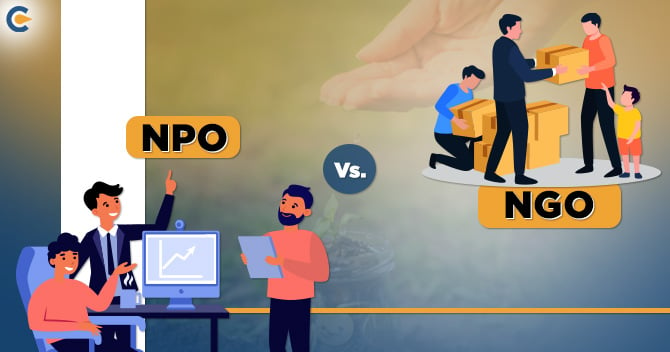NGOs, Foundations, Associations: What’s the Difference and Which One is Right for You?

NGOs, Foundations, Associations: What’s the Difference and Which One is Right for You?
Walking through the doors of Warsaw’s bustling NGO sector hub, I overheard a conversation that stopped me in my tracks. “We’re registering as a foundation,” declared one passionate activist, while her colleague countered, “No, we should be an association!” Neither could clearly explain why their chosen legal form mattered. This confusion is more common than you might think in Poland’s vibrant civil society sector.
The NGO Umbrella: More Than Just a Name
Let me start with a revelation that surprises many: “NGO” isn’t actually a legal structure. It’s an umbrella term—like “vehicle” covers everything from bicycles to trucks. When we talk about NGOs in Poland, we’re usually referring to either foundations (fundacje) or associations (stowarzyszenia), though social cooperatives (spółdzielnie socjalne) are gaining traction too.
I recall working with a group of environmental activists who nearly made a costly mistake. They’d assumed all nonprofits operate the same way and were days away from inappropriate registration before we sat down to examine their actual needs. The choice between these forms impacts everything from fundraising to daily operations.
Foundations: The Strategic Philanthropists
Picture this: A Warsaw businesswoman leaves part of her estate to establish an education fund. This is the classic foundation model—built on assets with a focused mission. Foundations in Poland operate like specialized tools in a workshop. They’re perfect when you have:
- An endowment or significant startup capital
- A clear, narrow mission (think medical research or arts preservation)
- No need for a broad membership base
I once advised a tech entrepreneur who wanted to support coding education in rural areas. A foundation was ideal because he could fund it personally and didn’t require member input. The structure gave him control through the foundation council while ensuring professional management of his vision.
Associations: Democracy in Action
Now imagine a different scenario: Seven neighbors unite to save their local park. They need a structure that values each voice equally. Enter the association—Poland’s version of grassroots democracy. Unlike foundations, associations:
- Require at least seven committed members
- Make decisions through votes and assemblies
- Excel at community mobilization
The beauty of this model shone through when I worked with a youth theater group in Kraków. Their rotating leadership and collective decision-making perfectly matched the association structure. Annual general meetings became not just administrative requirements but celebrations of their shared mission.
Social Cooperatives: Where Mission Meets Market
Here’s where things get interesting. Social cooperatives blend nonprofit ideals with business savvy. I’ll never forget the Łódź cooperative that employed former homeless individuals to make artisanal candles. Their structure allowed them to:
- Generate income through sales
- Reinvest profits into job training
- Maintain their social mission at the core
This hybrid model is revolutionizing how we think about sustainability in the nonprofit world. Just last month, I met with a cooperative near Gdańsk that’s turning ocean plastic into fashionable accessories while providing living-wage jobs.
Choosing Your Path: Key Considerations
So how do you decide? Through years of guiding organizations, I’ve developed a simple framework:
- Follow the money
- No startup funds? Association might work
- Have capital? Foundation could be better
- Want to earn income? Consider a cooperative
- Examine your decision-making style
- Prefer centralized leadership? Foundation
- Value collective input? Association
- Consider long-term goals
- Seeking permanence? Foundations endure beyond founders
- Want flexibility? Associations can evolve more easily
A client recently shared an “aha” moment when they realized their dream of creating a national scholarship program needed a foundation’s stability, while their community arts project was better suited to an association’s flexibility.
Beyond the Paperwork: Real-World Implications
The choice between these forms isn’t just bureaucratic—it shapes your daily reality. Foundations often face higher expectations from donors but enjoy more funding opportunities. Associations can pivot quickly but may struggle with volunteer burnout. Cooperatives balance sustainability pressures with social impact metrics.
One of my most rewarding projects was helping a traditional association transition parts of its work to a cooperative model. They maintained their core advocacy through the association while spinning off a self-sustaining job training program as a cooperative.
Your Next Steps
If you’re still uncertain, try this exercise: Gather your team and imagine your organization in five years. Who’s making decisions? How is funding secured? What does success look like? Often, the answers point clearly to one structure over another.
Remember, Poland’s legal framework allows for creative approaches. I’ve seen foundations create associations as project partners, and cooperatives that started as association initiatives. The most successful organizations understand how to leverage these structures in harmony.
Have you struggled with this decision? Share your story below—your experience could help others navigate these important choices. And if you need personalized guidance, our team offers free initial consultations to help match your vision with the right legal structure.
#CivilSociety #NonprofitStrategy #SocialEnterprise #PolishNGOs #OrganizationalDevelopment



